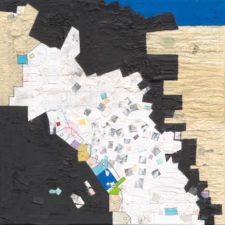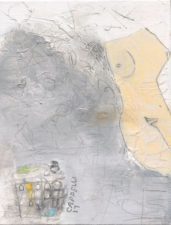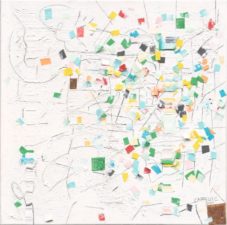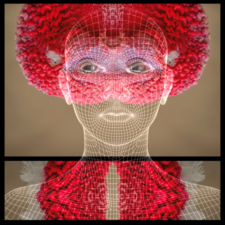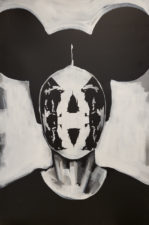The big promise of Web3 and blockchain is the decentralization of almost any organization. This means that, through a smart contract, organizations that are usually referred to as Decentralized Autonomous Organizations (DAOs) can self-execute decisions that are voted by the members of the community. Now, art has been one of the sectors of society that has driven the adoption of NFTs. The technology has allowed artists to claim ownership, as well as collectors, of a digital piece of work. Perhaps a more profound disruption is the possibility decentralized art endeavors, that audiences can enjoy and decide upon collectively. Decentralization could well be the next disruption in art.
Let’s take a dive in the historical context. Usually, there is an intelligentsia that acts as gatekeeper in the art world. Which has a useful purpose, especially for curation. It can provide historical and cultural context, as well as explain why a certain technique, style or movement should be appreciated. However, it has sometimes been elitist in its treatment of emerging arts because those that have consumed them have been the masses. People who have not been taught and trained to appreciate art. This can be a blindsided approach, as artistic expressions that today are considered a part of high culture were at some point considered little more than garbage. Jazz was disregarded as immoral and as barely more than a random combination of noises. Henry van Dyke, a professor at Princeton University at the beginning of the 20th century, said of jazz in its beginnings that “…it’s not music at all, it’s merely an irritation of the nerves of hearing…”. So, sometimes culture advances in spite of scholars and academics, and not because of them. Hence, the potential of decentralized art as a way of people being able to push forward artistic movements.
So art organizations that have no centralized authority could be of use for the wider culture, as a means to not be as blindsided in some instances, and make sure that culture moves forward.
Take for example Pixlr. A free online image editor, one can see how decentralized art would be a part of the ethos of this company. The software company decided that it was time to launch a NFT Museum that would be crowdsourced, and therefore decentralized. Pixlr Genesis was born from this notion. For now, some of the benefits are access to exclusive airdrops, as well as the tools for creating NFT-based experiences and community. It’s a type of decentralization that builds community. One where creators and collectors interact, as well as those that look for art for aesthetic enjoyment.
Maecenas.co is a platform where users can jointly buy artwork, which significantly lowers the entry barriers into the art investing world. These are real-life, world-renowned pieces of artwork that can —at times— be physically held, but most of the time they are stored and preserved in safe locations. How do they use Web3 for this instance of decentralized art? Well, they use tokens on the Ethereum blockchain to represent this part-ownership of a given work of art. Also, they allow art galleries to use their ecosystem to sell their works of art.
There are many ways that decentralized art will come into fruition, because there are many ways that the experience can be decentralized. From the supply (artists), to the demand (investors) and the institutional curation and preservation of art. There are many ways the sector can become more democratic, without this meaning that traditional centralized operations will all of a sudden cease to exist. This is because there are pros and cons to decentralization. A museum or art gallery might find use to being centralized and not delegate decision-making powers on others, as they are driven by a very specific original vision. At times, these are better carried out if there is no outside input other than the artist’s subjectivity.
Art institutions can enhance their mission
Non-profit art institutions, as well as those that are dependent on the State, can really benefit from this new paradigm of enhanced democracy in other areas that are not exclusively political. Given that the stakeholders are basically the people, why shouldn’t they be allowed to participate? It’s a great way for beneficiaries, artists, and donors to come together and create —hand in hand— a new way of conceiving art. Web3 can be a way to become more involved with institutions that care about and curate art to fulfill their mission of getting greater portions of the population to engage with art.
The inception of the metaverse, combined with DAO possibilities, allows for immersive experiences —that are familiar with what we are used to in real life— while empowering the stakeholders of the artistic industry. It’s a very clear example of a community that now has a space to interact, hold events, or pass the time doing the thing that they enjoy the most: contemplating art.
A final word on art galleries
The art gallery sector, centralized or not, has a lot to offer the NFT space. They will still offer a network of connections between artists, collectors, and experts in fine arts. An art gallery like SOPRG is always looking to emphasize the work of artists who have unique and original aesthetics that can produce enjoyment to a wider public.
As we think of decentralized art, maybe we can think not only of more democratic organizations like DAOs or the ability to buy part of a piece of art. Perhaps we should think of a more democratic industry with lower entry barriers, with small businesses and large auction houses having a level playing field and contributing to the enhancement of art.


